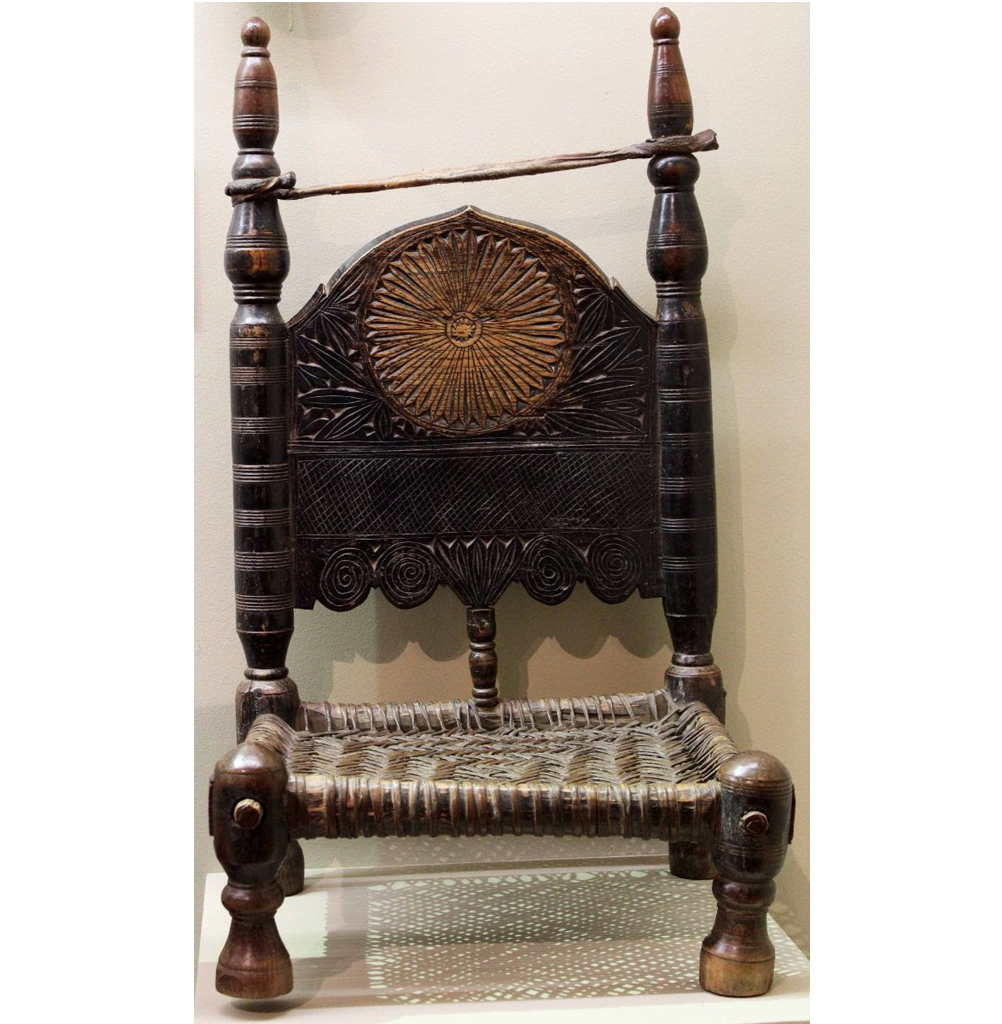
Swat is a mountainous district of northern Pakistan. Traditionally, woodworkers were held in great esteem in Swat, and intricately carved motifs adorned a wide range of wooden objects; from stately mosque columns to everyday tools and utensils.
The carved backrest of this low chair bears a number of motifs typically found in the Swat Valley. The small column that rises from the seat to the backrest represents the tree as the centre of the world. The large rosette in the centre, and the patterning around it, are believed to be Buddhist motifs from Swat that have survived from the 11th century.


This chair is on display in Tree of Life: The Art of Wood Carving in Swat. In Swat, carpenters often carved trees, like the tree on the backrest of this chair, onto wooden objects, turning the wood back into a tree.
Swat is an area rich in ancient artforms and has lush, fertile soils due to the wetter, cooler climate of the snow-capped mountains. The area provides ideal growing conditions for the Himalayan Cedar tree, also known as the Deodar Cedar. It is a tall evergreen coniferous tree with needle-like leaves and long bare trunks. With forests reaching from the valleys high up into the mountains, the deodar cedar provides a sustainable source of wood, and is the material used in many of the objects on display, from a grain chest to amulets, a yoke, a butter churner, column heads, wooden sandals and many others.

